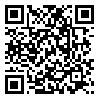Fri, Dec 26, 2025
[Archive]
Volume 13, Issue 2 (3-2023)
Iran J Ped Hematol Oncol 2023, 13(2): 144-160 |
Back to browse issues page
Download citation:
BibTeX | RIS | EndNote | Medlars | ProCite | Reference Manager | RefWorks
Send citation to:



BibTeX | RIS | EndNote | Medlars | ProCite | Reference Manager | RefWorks
Send citation to:
Sadeqi Nezhad M, Rajabzadeh A, Dehghani Firoozabadi A. CAR T-cell Therapy of Hematologic Malignancies: An Update in Targeted Antigens. Iran J Ped Hematol Oncol 2023; 13 (2) :144-160
URL: http://ijpho.ssu.ac.ir/article-1-575-en.html
URL: http://ijpho.ssu.ac.ir/article-1-575-en.html
Department of Applied Cell Sciences, Faaculty of Medicine, Kashan University of Medical Sciences, Kashan, Iran
Abstract: (1385 Views)
Immunotherapy with genetically engineered T-cells that express the chimeric antigen receptor (CAR) has raised hopes for the treatment of pediatric malignancies. Although CAR T-cell development is on a fast-moving pace and evolution, the context of exploring novel targetable antigens has been neglected. In this review study, we analyze the prominent hematologic antigens targeted by engineered T-cells in both preclinical and clinical aspects. Furthermore, we discuss the outcomes of CAR-based therapy in hematologic cancers from different viewpoints of treatment and provide some critical features for additional considerations. Almost certainly, most of the engineered T-cells redirected against hematologic disorders aim at conventional target antigens rather than targeting an ideal target antigen that is exclusively expressed on cancerous cells and restricted to normal tissues. CAR-based clinical trials in hematologic cancers have often dealt with CD19, followed by BCMA, CD22, and CD20 antigens. Besides, most of the scFvs used in the CAR structure are derived from murine antibodies, which may raise the concern about immunogenicity by reducing the persistence of modified T-cells. Nevertheless, short- and long-term life-threatening toxicities and the development of escape mechanisms that result in resistance and antigen loss are not thoroughly understood yet. The ultimate goal of using modified CAR T-cells is to make them effective and curative. Therefore, a better understanding of all the features pertaining to target antigens is imperative. Also, the methods to identify candidate target antigens and manage the associated obstacles of CAR T-cells should be evaluated and prioritized.
Subject:
General
Received: 2020/09/2 | Accepted: 2022/12/25 | Published: 2023/03/19
Received: 2020/09/2 | Accepted: 2022/12/25 | Published: 2023/03/19
Send email to the article author
| Rights and permissions | |
 |
This work is licensed under a Creative Commons Attribution-NonCommercial 4.0 International License. |





